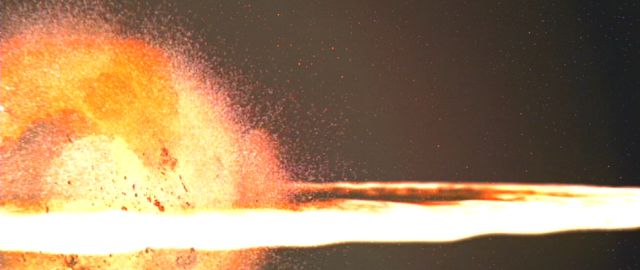
Posted on 02/02/2010 7:06:54 PM PST by Steve Van Doorn
Since January 17, 2010 Yellowstone has had the second largest swarm ever recorded. The swarms have been steady at about 10 miles in depth and they have subsided a few days ago.
In the past two days the depth has raised up to around 7 miles and in the past couple hours quakes vastly increased.
http://www.quake.utah.edu/helicorder/ymr_webi.htm
http://www.seis.utah.edu/req2webdir/recenteqs/Maps/111-44.html
Remember this doesn’t mean we will see an eruption and it most likely means a normal volcano. It is very unlikely we will see a caldera eruption.
But these changes are significant and cannot be over looked
Some history:
Since the most recent giant caldera-forming eruption, 640,000 years ago, approximately 80 relatively nonexplosive eruptions have occurred. Of these eruptions, at least 27 were rhyolite lava flows in the caldera, 13 were rhyolite lava flows outside the caldera and 40 were basalt vents outside the caldera. Some of the eruptions were approximately the size of the devastating 1991 Pinatubo eruption in the Philippines, and several were much larger. The most recent volcanic eruption at Yellowstone, a lava flow on the Pitchstone Plateau, occurred 70,000 years ago.
Unfortunately, it will be at best only a few minutes between animals freaking out and ground blowing up.
If it really goes, then the ash will circle the earth and there will be crop failures all around the Northern Hemisphere.
Youtube - 2 of 3: The Purpose, Planning and Packing your Bug-Out-Bag
Youtube - 3 of 3: The Purpose, Planning and Packing your Bug-Out-Bag
If Jellystone blows the ash cloud will circle the planet in less than a week. Iowa will not be passed over. Oh and globull warming will be the least of our worries.
Statistically, it is very unlikely that any of these geologic events will occur in a given timeframe--right up until they happen.
I dig geology, but I’m not formally educated in it. Just interested. Would there be other changes such as release of gas (sulfur) or more “hot spots” on the ground that are new, before an eruption? or would the changes not appear in time to matter anyway?
La Garita is extinct. I do not know the answers on the others.
La Garita was 3x the size of the largest Yellowstone eruption.
There’s been a so-called “super eruption” every approximate 650,000 years. The last one was about, ‘gulp’, 650,000 years ago.

looks like we just had another one
There is absolutely nothing on God’s green earth like seeing the Yellowstone basin in early evening, when the orange-pink-purple sunset casts it waning light on the mountain peaks. Or Old Faithful and Mammoth Hot Springs, or the mud pots, in the middle of the worst blizzard you’ve ever been in. Or the sound of the bull elk on the Teton plain, sounding throughout the nights as they’re in autumn’s rut, herding their females together. The sounds of the buffalo, jiggling your feet underfoot, as they run somewhere over a rise, but you can’t see them. The taste of true, pure, water from ice melt, hiking the Tetons, cold as snow and fresh as pure can be. Come nightfall, the tents all covered in inches of snow you have to shake off, with camp fires all around and that pungent, pine-and-aspen wood smoke trailing up into the night sky. Glory. It’s glory.
No doubt...it will indeed be the end of this nation.
thanks very much for this. one of the strengths of f.r., particularly in the old days, has been the first news of just about anything important.
glad to see you keeping the tradition alive!
and very nice analysis.
Everybody thinks that people will die if a massive volcano happens at Yellowstone. Not necessarily so. We could see a volcano explosion 500 times more powerful than Mount St. Helens and that does not mean anybody will die. Except maybe a few squirrels and maybe a grizzly bear or two.
Go read up on Mt St Helens, or what happened at Crater Lage in Oregon. I saw St Helens. Still have the photo to prove it.
I loved St Helens. She was the graceful one to climb, the one to take a thermos of tea to sit on a rock and drink slowly there. Even knew folks who free jumped the crevasses over her glaciers, but they were dipshiits. She was a lady.
Thanks. I love to read up on St. Helens.
about 34 miles by 45 miles, according to WikiPedia.
Disclaimer: Opinions posted on Free Republic are those of the individual posters and do not necessarily represent the opinion of Free Republic or its management. All materials posted herein are protected by copyright law and the exemption for fair use of copyrighted works.